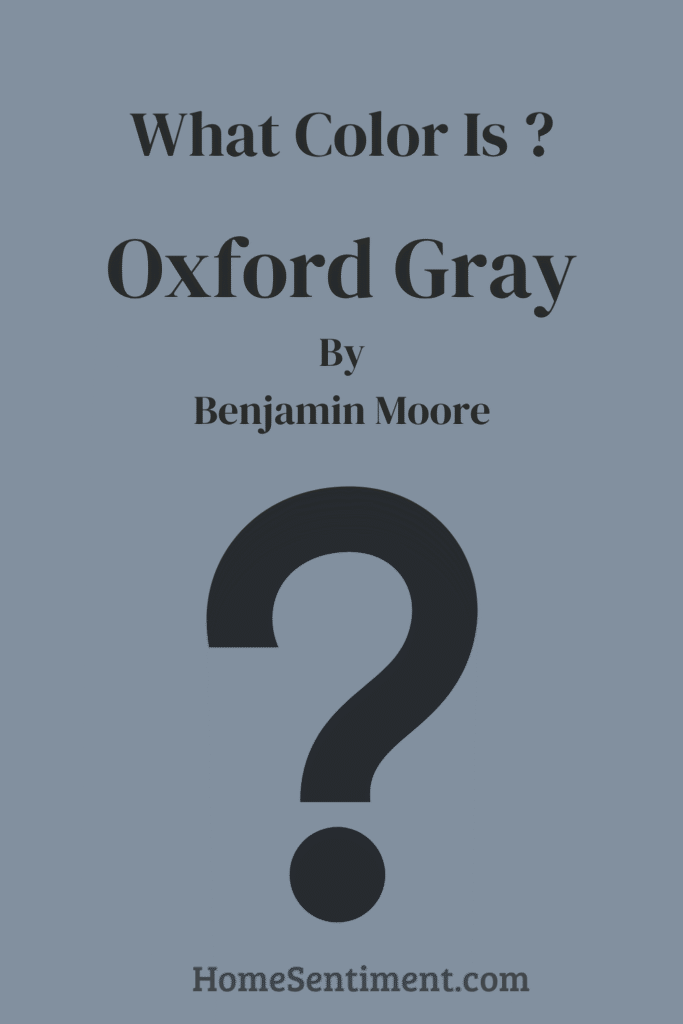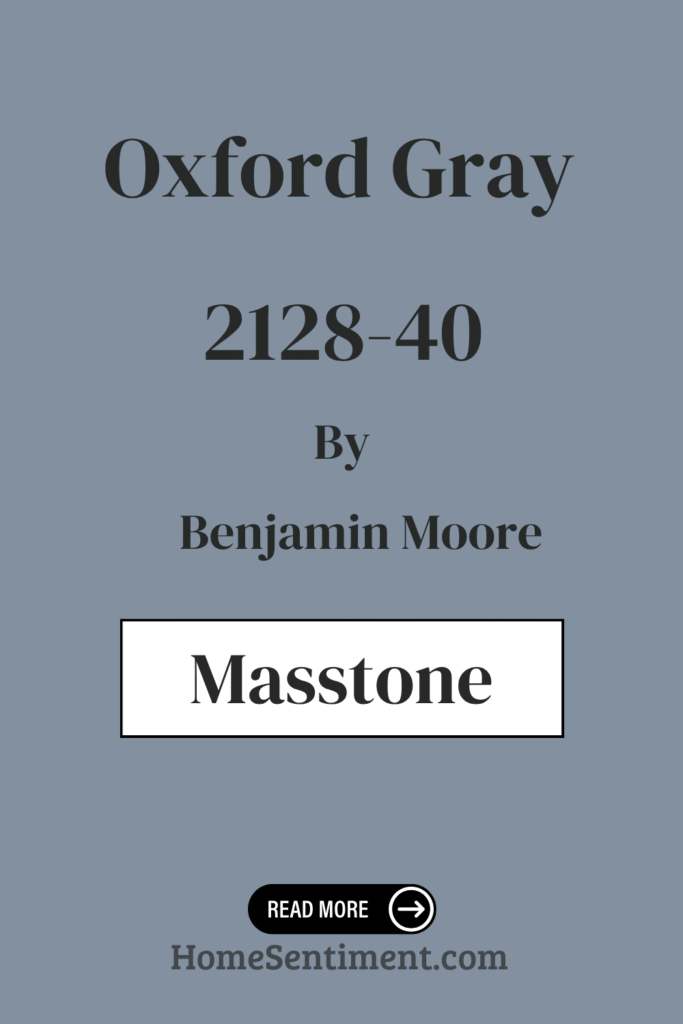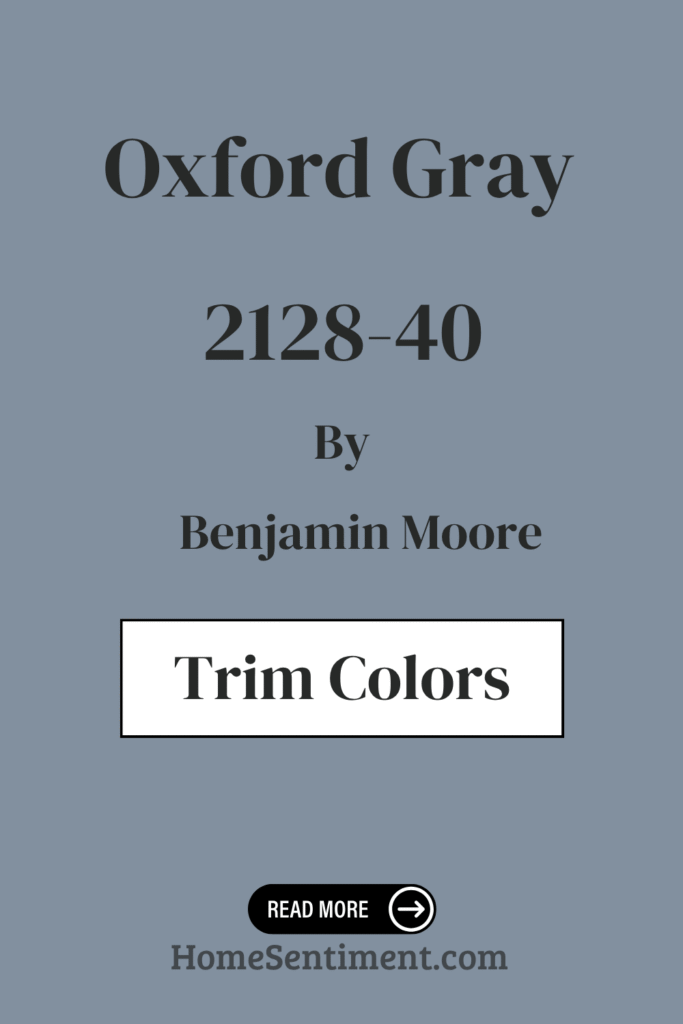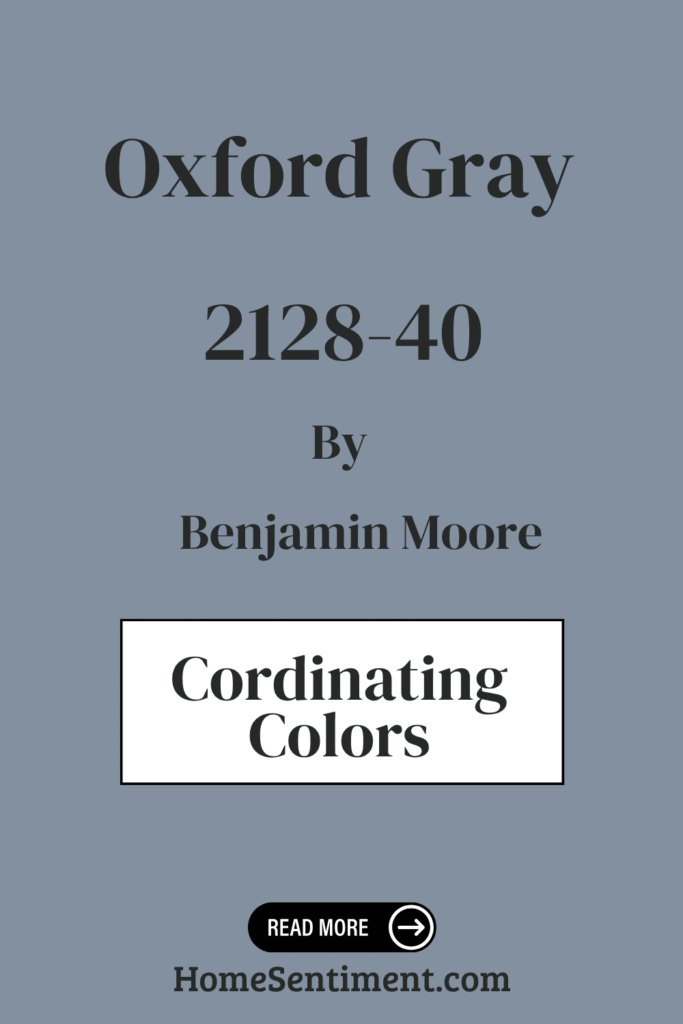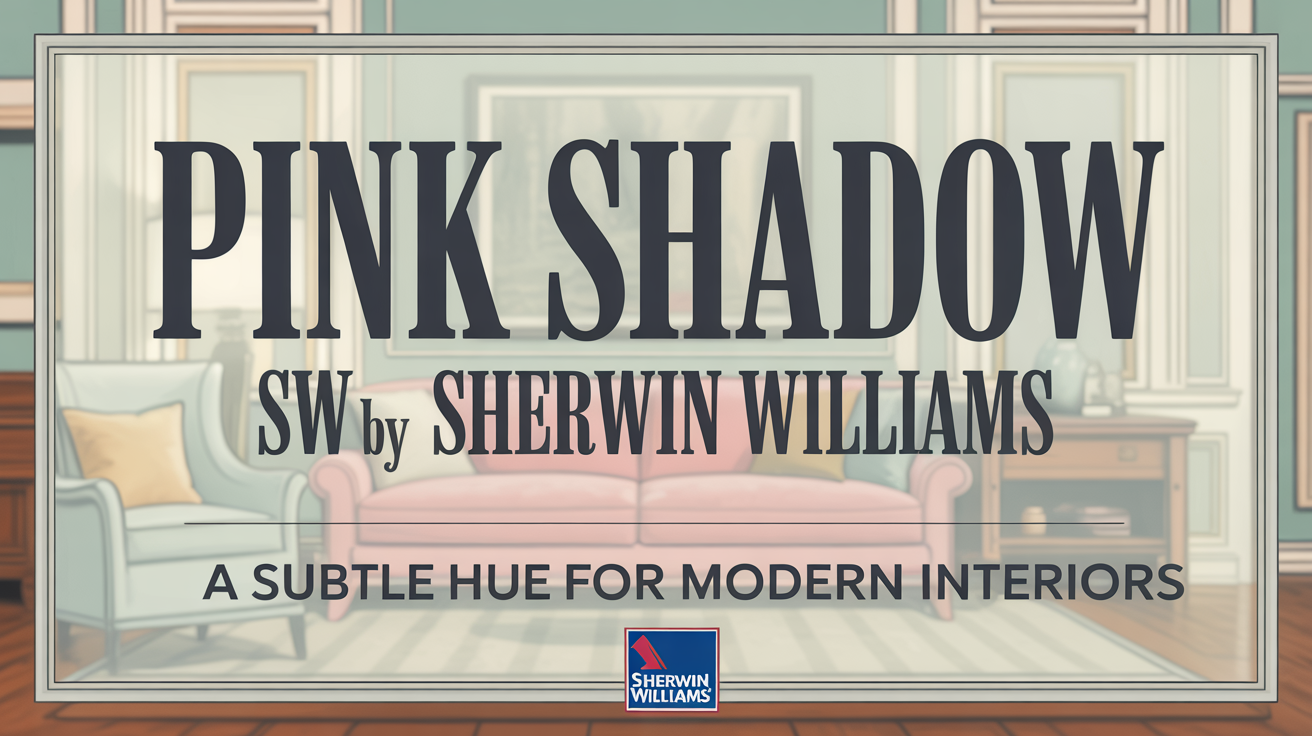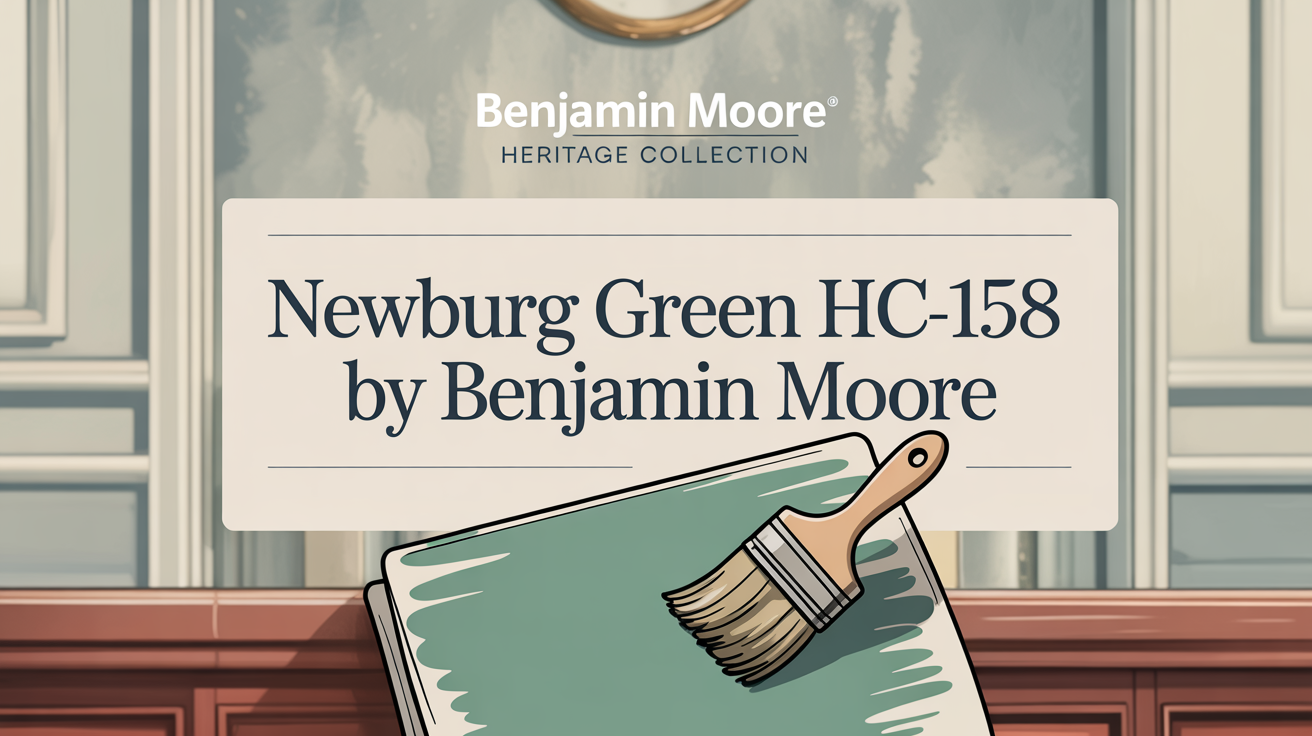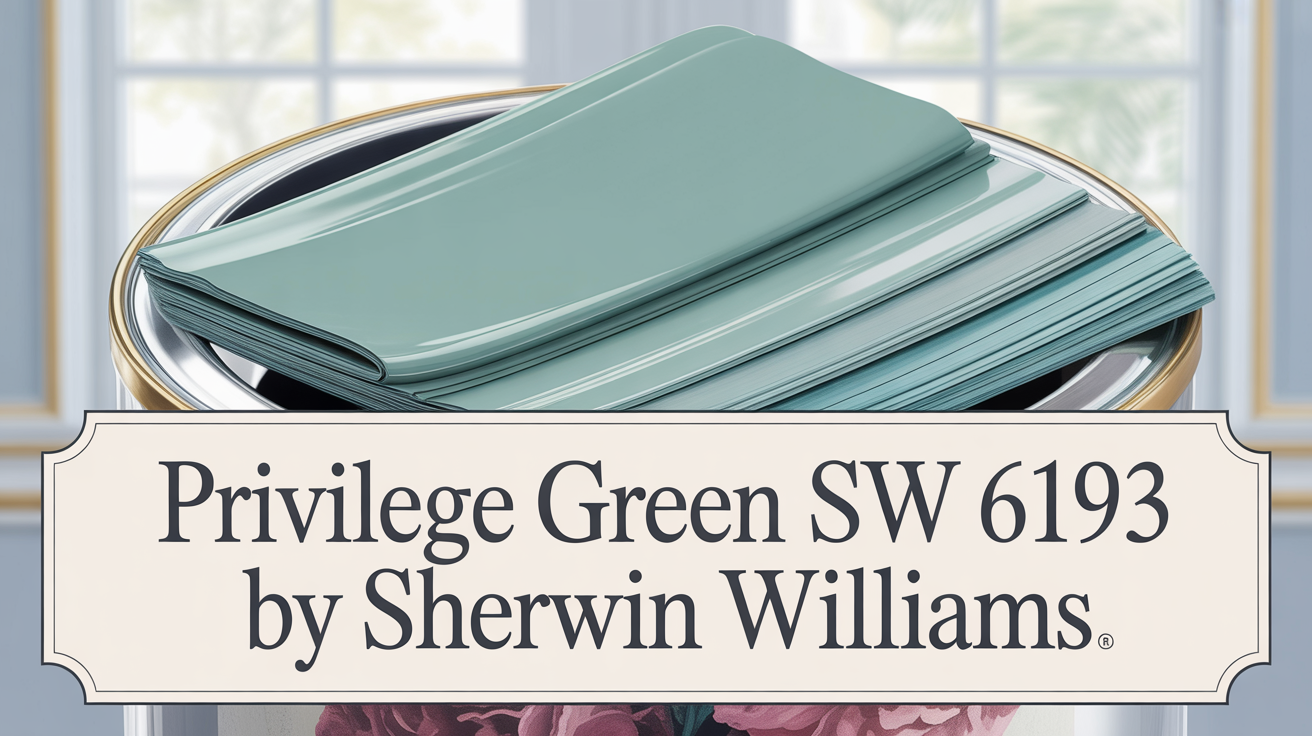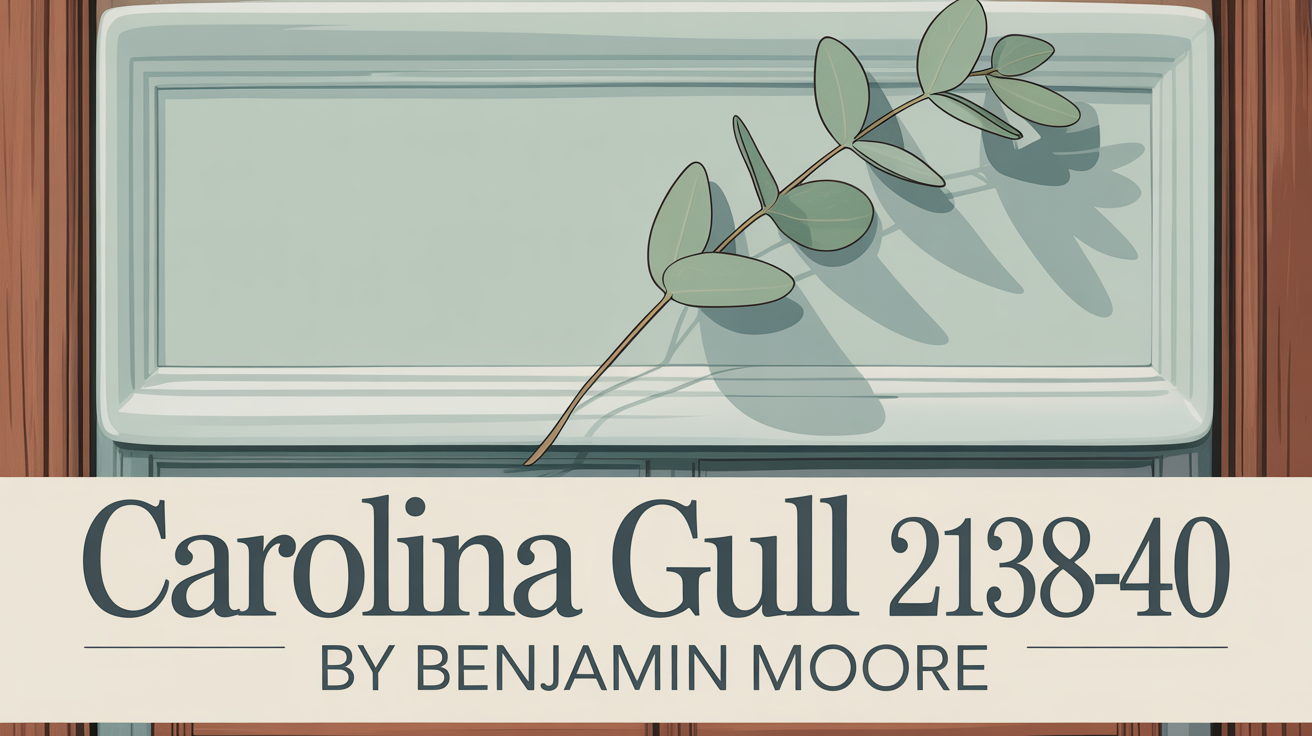A Touch of Simple Elegance
Imagine walking into a room that just feels right. Calm, stylish, effortlessly elegant. That’s the vibe you get with 2128-40 Oxford Gray by Benjamin Moore.
It’s not just gray; it’s a deep, muted blend of blue and gray that really brings warmth and sophistication to a space. Whether you’re dreaming of a cozy bedroom or a sleek living room, this color fits right in.
You’ll find it has this cool way of changing depending on the light. Sunlight might pull out its subtle blue side during the day, while evening light makes it feel deeper and super cozy. It’s an understated color that still manages to add plenty of personality.
Oxford Gray is surprisingly versatile. It works wonders with crisp whites for a clean look or warm woods for a beautiful contrast. Don’t forget metallic accents like brass or nickel; they give it a polished finish.
If you’re ready for a change and want something reliable but also interesting for your walls, Oxford Gray could be your perfect match. It slides seamlessly into different design styles, from traditional to contemporary.
Get ready for it to become a favorite for creating standout spaces in your home.
What Color Is Oxford Gray 2128-40 by Benjamin Moore?
Let’s get specific: Oxford Gray 2128-40 by Benjamin Moore is a deep, sophisticated gray. It definitely has blue undertones.
This combination creates an atmosphere that feels both calm and cozy. It just exudes this touch of cool elegance. It’s a versatile shade that truly adds depth and character to any room.
Is Oxford Gray 2128-40 by Benjamin Moore Warm or Cool color?
Oxford Gray 2128-40 is a rich, deep color that brings warmth and sophistication into a home. This blue-gray shade gives rooms a feeling of being calm and grounded.
It works beautifully in various areas. Think a cozy living room, a welcoming entryway, or a serene bedroom.
In bright, naturally lit rooms, it can look a bit lighter, creating a cool yet inviting feel. But in dimmer spots, it deepens, making the space feel intimate and even cozier. It’s super flexible.
What is the Masstone of the Oxford Gray 2128-40 by Benjamin Moore?
When we talk about the masstone of Oxford Gray 2128-40, we’re looking at its main, underlying color. For this shade, the masstone is Grey (#808080).
This gives it a neutral tone, which is why it feels so calm and balanced. That neutral base is what makes it so easy to pair with all sorts of other colors and your existing decor.
It’s great in smaller rooms, making them feel intimate without being cramped. In bigger spaces, it adds a soothing ambiance and helps create a unified look. The subtle blue hint just adds that bit of depth without overwhelming anything. It truly enhances natural light, making spaces feel brighter and more inviting.
Undertones of Oxford Gray 2128-40 by Benjamin Moore
This is where Oxford Gray gets really interesting. It’s a complex color with multiple undertones. These subtle hints are what make the color look so dynamic on your walls.
Its primary undertones include shades like lilac, mint, and light blue. How the color looks can totally change depending on the light and what other colors are around it.
For instance, under warmer light, you might see more of its soft lilac and pale pink side, giving it a cozy, inviting vibe. But shift to cooler light, and those dark turquoise and blue notes come forward, making it feel more relaxed. You might even catch hints of light green and olive, adding an earthy, natural touch.
These undertones do more than just change its look; they can affect the mood of the room. Lilac and light purple suggest elegance, blue brings calmness, and green hints at freshness. The color on your walls can actually shift throughout the day. Morning might reveal light gray and pale yellow, while evening deepens the blues and purples.
The undertones are key to its versatility. They ensure it feels dynamic and adds wonderful depth to any space. So, definitely think about your lighting and surrounding colors to see all the facets of Oxford Gray.
Coordinating Colors of Oxford Gray 2128-40 by Benjamin Moore
Choosing the right coordinating colors is essential for creating harmony and balance. Oxford Gray, with its deep sophistication, is a fantastic base to work from. Pairing it with the right shades truly enhances a room’s appeal.
Here are some colors that complement it beautifully:
- OC-17 White Dove: This is a soft, warm white that brings light and softness. It’s perfect for trim or ceilings, offering a fresh, clean contrast.
- 2120-30 Witching Hour: A bold, dark blue that adds depth and drama. Its rich undertones complement the gray wonderfully.
- AF-65 Fossil: This is a muted, earthy tone. It balances the stronger hues of Oxford Gray and Witching Hour, adding warmth and coziness for a more grounded feel.
- OC-68 Distant Gray: A crisp, neutral white with subtle gray hints. It’s versatile for walls or accents, letting the deeper shades pop while keeping things cohesive.
Together, these create a sophisticated, layered palette, each adding unique character for a seamless look.
How Does Lighting Affect Oxford Gray 2128-40 by Benjamin Moore?
Lighting is a game-changer for color perception. Natural light, artificial light, even the direction your room faces – it all impacts how Oxford Gray looks. It’s a complex color, so its appearance can really shift.
Under artificial light, like older incandescent bulbs, it might lean into warmer undertones. The slight yellow in these bulbs can make the gray look a bit muted or even give it a touch of blue. Fluorescent lights, with their cooler, sometimes harsher light, might make Oxford Gray appear colder or sharper.
Natural light changes its character throughout the day.
- In a north-facing room, where the light is cooler and consistent, Oxford Gray might look darker and more muted. Its bluish undertones will likely be more noticeable, creating a calm, subdued atmosphere.
- A south-facing room gets tons of sunlight. This warm light can make Oxford Gray seem lighter and really bring out its depth. Sometimes, it might even feel cozier and more inviting. The sunlight’s warmth beautifully balances the cooler undertones.
- East-facing rooms get bright, crisp morning light. Oxford Gray will appear lighter in the mornings, showing off more of its color depth. As the light fades in the afternoon, it looks darker, echoing those cooler evening tones.
- West-facing rooms are the opposite of east-facing ones. Warm afternoon and evening light fill these spaces. Oxford Gray might look richer and warmer during these hours, adding a lovely cozy feeling.
These subtle light changes throughout the day highlight Oxford Gray’s versatility.
What is the LRV of Oxford Gray 2128-40 by Benjamin Moore?
LRV stands for Light Reflectance Value. It’s simply a measure of how much light a color bounces back. The scale runs from 0% (absorbs all light) to 100% (reflects all light). High LRV colors are lighter and make rooms feel brighter and more open. Low LRV colors absorb more light, making spaces feel cozier, though sometimes smaller. Understanding LRV is super helpful when picking paint.
Oxford Gray by Benjamin Moore has an LRV of 28.78.
This means it’s definitely on the darker side. It absorbs more light than it reflects. Painting your walls with Oxford Gray will give the room a sense of depth and make it feel intimate and warm. Remember, in bright light, it looks a bit lighter, but in dim settings, it’s richer and more intense. Its LRV shows it’s a great pick for a moodier atmosphere or adding contrast to lighter elements.
What are the Trim colors of Oxford Gray 2128-40 by Benjamin Moore?
Trim colors are key for highlighting details like moldings, doors, and window frames. They create contrast and help architectural features pop. Choosing the right trim for Oxford Gray is crucial. You want to enhance its deep hues without making the room feel heavy. It’s all about balance and making the space feel cohesive.
Oxford Gray is a sophisticated deep slate blue. Pairing it with the right trim really enhances its elegance.
Here are a couple of excellent choices:
- OC-110 Milkyway: This is a warm beige with creamy undertones. It offers a soft, slightly contrasting edge against the deep Oxford Gray. This combo feels inviting, cozy, and classic.
- OC-65 Chantilly Lace: A pure, clean white. This provides a crisp, fresh contrast. It brightens the room and highlights details, giving a modern feel.
Both options let the rich tones of Oxford Gray be the star, just in different ways.
Colors Similar to Oxford Gray 2128-40 by Benjamin Moore
Working with similar colors helps create a cohesive and harmonious look. These colors often share undertones, leading to a balanced, visually appealing space. Oxford Gray pairs beautifully with other colors that share its vibe.
Consider these shades that complement its depth:
- 1629 – Bachelor Blue: A soft, refined blue that’s wonderfully calming. It’s great for creating a relaxed mood.
- 1649 – Polaris Blue: This one’s a bit lighter and more vibrant. It has a hint of brightness, adding energy while keeping that serene feeling.
- 1622 – Mineral Alloy: A grayish-blue with an earthy feel. It brings a sense of comfort and stability.
- 1440 – Irises: A gentle purple hue that’s reminiscent of flowers. It adds a touch of warmth and elegance.
Using these similar colors helps create a unified but dynamic environment. Each shade plays a part in making a space inviting and stylish.
Colors that Go With Oxford Gray 2128-40 by Benjamin Moore
Oxford Gray 2128-40 is a versatile blue-gray that’s an excellent foundation. Complementary colors really help bring out its unique qualities and build a harmonious space.
Let’s look at some colors from the same strip that pair well:
- 2128-60 Beacon Gray: This is a lighter gray that offers a soft, airy contrast. It helps balance the palette and makes the overall look feel lighter.
- 2128-50 November Skies: A muted, slightly darker tone. It adds subtle depth and feels comfortable and cohesive alongside Oxford Gray.
- 2128-10 Black Beauty: If you want drama, this rich, deep black is perfect. Use it for accents or furniture to add sophistication.
- 2128-70 Lily White: A gentle, barely-there white. It brightens and freshens spaces, offering a clean look against the deeper tones.
- 2128-30 Evening Dove: Another dark, moody blue. It blends beautifully with Oxford Gray to create an intimate, cozy space.
- 2128-20 Abyss: A deep, intense color. It adds mystery and elegance, perfect for areas where you want a strong visual statement.
These colors work together to create a range of styles and moods, showing off just how versatile Oxford Gray is.
How to Use Oxford Gray 2128-40 by Benjamin Moore In Your Home?
Oxford Gray is a deep, rich color that genuinely brings warmth and comfort. It’s that blend of blue and gray that offers a calm yet sophisticated feel.
In a bedroom, it can create a cozy, restful haven – ideal for winding down.
For the living room, try it on an accent wall. It adds depth without feeling heavy. Pair it with lighter furniture and soft textiles to balance its intensity.
It’s also a great fit for a modern kitchen. It complements stainless steel appliances and white cabinets for a sleek, elegant look.
In a home office, it can actually help you focus. Its serene quality reduces distractions, creating a calm work setting.
Oxford Gray’s versatility makes it work with so many styles, from traditional to contemporary. It fits seamlessly into different rooms, adding elegance and comfort throughout your home.
Oxford Gray 2128-40 by Benjamin Moore vs Irises 1440 by Benjamin Moore
Let’s compare Oxford Gray and Irises 1440 – they offer totally different feels.
Oxford Gray 2128-40 is that deep, rich shade with blue undertones we’ve been talking about. It brings sophistication and makes rooms feel cozy yet substantial. It’s perfect for creating a moody, dramatic atmosphere and works well in both modern and traditional styles. It pairs beautifully with lighter grays or whites, really letting accent pieces shine.
Irises 1440, on the other hand, is a softer, muted shade with hints of lavender. It evokes a serene and calming ambiance. It has a gentle presence, making it ideal for bedrooms or relaxing spaces. This color complements natural wood tones, adding warmth and elegance without overpowering anything.
So, Oxford Gray brings depth and drama, while Irises offers lightness and subtlety. The choice depends on the mood and style you want to create.
Oxford Gray 2128-40 by Benjamin Moore vs Polaris Blue 1649 by Benjamin Moore
Comparing Oxford Gray to Polaris Blue 1649 gives us another interesting contrast.
Oxford Gray 2128-40 is your deep, sophisticated mix of gray and blue. It’s a cool, muted tone that feels calming and stable. It’s the color you want for subtle elegance without being too bold.
Polaris Blue 1649 is a lighter shade with a more noticeable blue presence. It feels airy and refreshing, bringing openness and clarity. This color has an uplifting quality, great for areas where you want a vibrant but still soothing feel.
While both feel calming, their impact differs. Oxford Gray is about understated depth, while Polaris Blue is about lively energy. Each has its place depending on the mood you’re after.
Oxford Gray 2128-40 by Benjamin Moore vs Mineral Alloy 1622 by Benjamin Moore
Now, let’s look at Oxford Gray versus Mineral Alloy 1622.
Oxford Gray 2128-40 is that deep, moody blend of blue and gray. It brings a sophisticated, almost dramatic touch and feels cozy and intimate. It really shines in rooms with lots of natural light, as it shifts throughout the day, from blue-ish to more muted gray.
Mineral Alloy 1622 is much lighter and more subtle. It’s a soft mix of gray with just a hint of blue, creating a calm atmosphere. Its lighter tone makes it super versatile for both small and large spaces where you want to keep things airy.
Oxford Gray is bold and commands attention, while Mineral Alloy provides a serene, illuminating backdrop. The decision comes down to whether you want a strong statement or a quiet, understated elegance.
Oxford Gray 2128-40 by Benjamin Moore vs Bachelor Blue 1629 by Benjamin Moore
Finally, let’s compare Oxford Gray to Bachelor Blue 1629.
Oxford Gray 2128-40 has that deep, muted blue-gray tone giving it a sophisticated, calming presence. It feels classic with a touch of teal, making it work in modern or traditional spaces. It’s deep and rich, great for walls or accents.
Bachelor Blue 1629 is a softer, lighter shade. It leans towards a gentle powder blue, making a room feel airy and open. This color is fresh and bright, perfect for a serene bedroom or living space.
They both fall in the blue family but serve different purposes. Oxford Gray is for creating cozy, intimate spaces, while Bachelor Blue brightens areas with a light, refreshing touch. Choose based on whether your space needs depth or lightness.
Conclusion
Spending time with 2128-40 Oxford Gray by Benjamin Moore has really shown me its charm. It strikes this wonderful balance between sophistication and warmth. It just feels refined yet approachable.
Its rich, deep tones make it incredibly versatile for both contemporary and traditional homes.
I particularly appreciate how well it creates an intimate, cozy feel. Whether it’s in a living room or a bedroom, it just works.
The way the color shifts with different lighting is fascinating. Natural light brings out its softer side, while artificial evening light reveals its more dramatic, moody character. This adaptability is appealing; it works with so many design elements and personal styles.
Plus, Oxford Gray pairs beautifully with lots of accent colors. Go for soft pastels for calm or bold, vibrant tones for something livelier. Its versatility lets you play with different textures and finishes, offering endless creative possibilities.
Choosing Oxford Gray feels like adding a touch of elegance and depth to your space. It’s a timeless choice that doesn’t overwhelm, making it an excellent option for a harmonious and inviting home.

